EU sets course for calmer (waste) waters
As the world grapples with the escalating challenges of water scarcity, exacerbated by climate change and rapid urbanization, the need to promote a higher level of wastewater reuse has become increasingly important.
Wastewater, once considered a mere byproduct, now holds immense potential as a valuable resource that can alleviate water stress and contribute to a more sustainable and circular water management approach, particularly in urban areas where water demands are high – and rising.
Managing urban wastewater effectively and efficiently is – or at least, should be – a priority for communities and governments across the world. Yet the track record to date is far from encouraging.
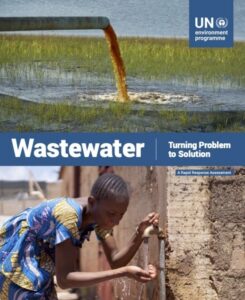 The UN Environment Programme estimates that only around 11% of of the estimated total of domestic and industrial wastewater produced globally is currently being reused, with an estimated 48% still being released untreated into the environment[1]. In the EU, it is estimated that at least 1 billion cubic meters of treated urban wastewater is reused annually. Sounds promising, but the potential for reuse is six times higher than this[2], meaning that over 80% of wastewater in the EU is wasted or discharged without beneficial use. Literally billions of gallons of water, the lifeblood of our hopes for a sustainable future, are disappearing down the plughole every year.
The UN Environment Programme estimates that only around 11% of of the estimated total of domestic and industrial wastewater produced globally is currently being reused, with an estimated 48% still being released untreated into the environment[1]. In the EU, it is estimated that at least 1 billion cubic meters of treated urban wastewater is reused annually. Sounds promising, but the potential for reuse is six times higher than this[2], meaning that over 80% of wastewater in the EU is wasted or discharged without beneficial use. Literally billions of gallons of water, the lifeblood of our hopes for a sustainable future, are disappearing down the plughole every year.
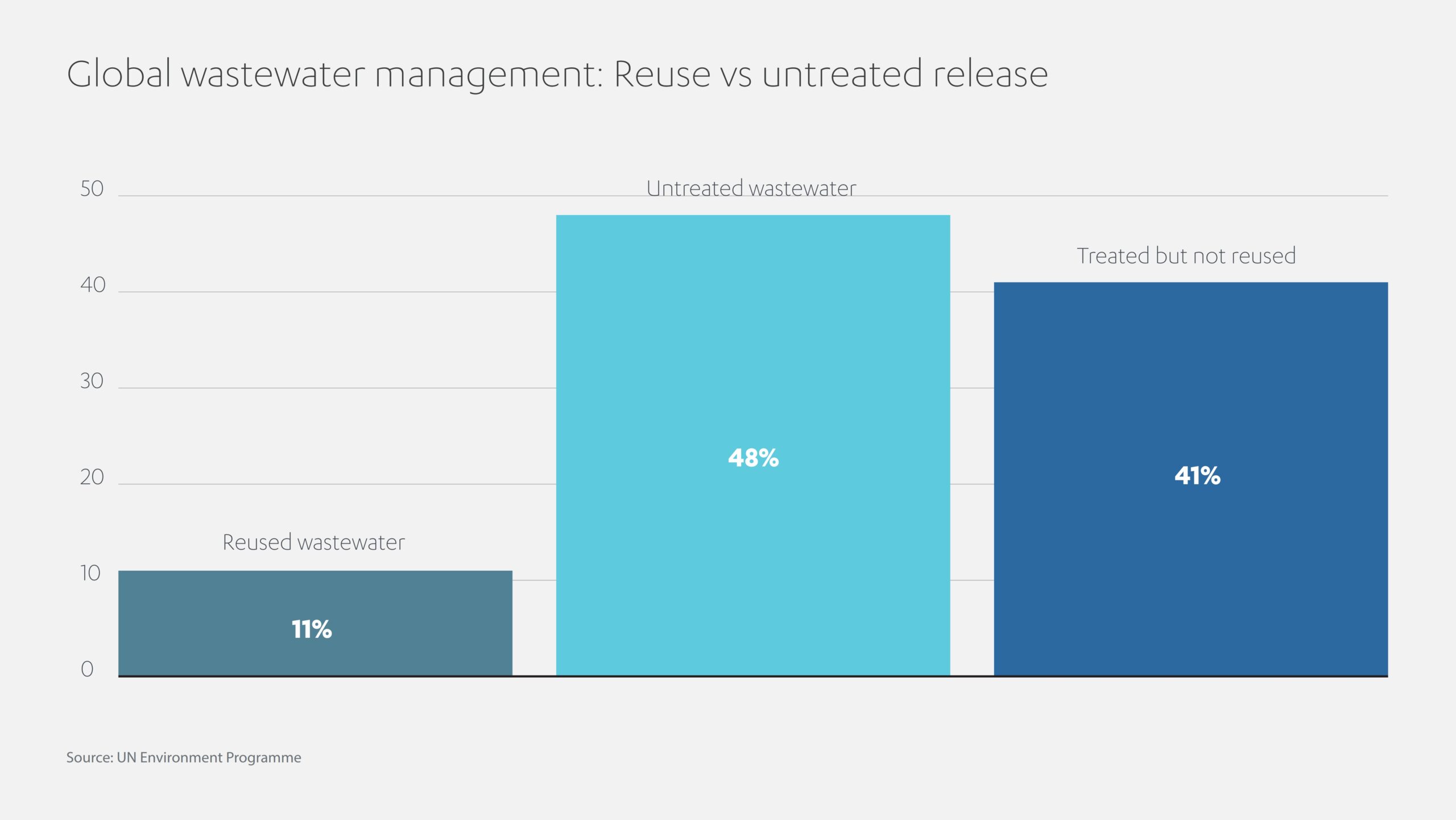
Discharging untreated wastewater into the environment is not only a missed opportunity to take some of the pressure off fresh water sources, it also poses environmental and health risks.
It is against this background that in January 2024, European Union (EU) lawmakers agreed proposals for a new urban wastewater treatment directive, designed to improve the collection and treatment of urban wastewater across EU member states. The directive represents a significant milestone in the sustainable management of wastewater. It aims to reduce the level of pollution discharged into the environment through wastewater, align the directive with the goals of the European Green Deal, set targets for achieving energy neutrality in the sector and establish a sound governance framework for wastewater management.
Currently making its way through the EU’s legislative process, the directive is expected to come into force in the third quarter of 2024[3].
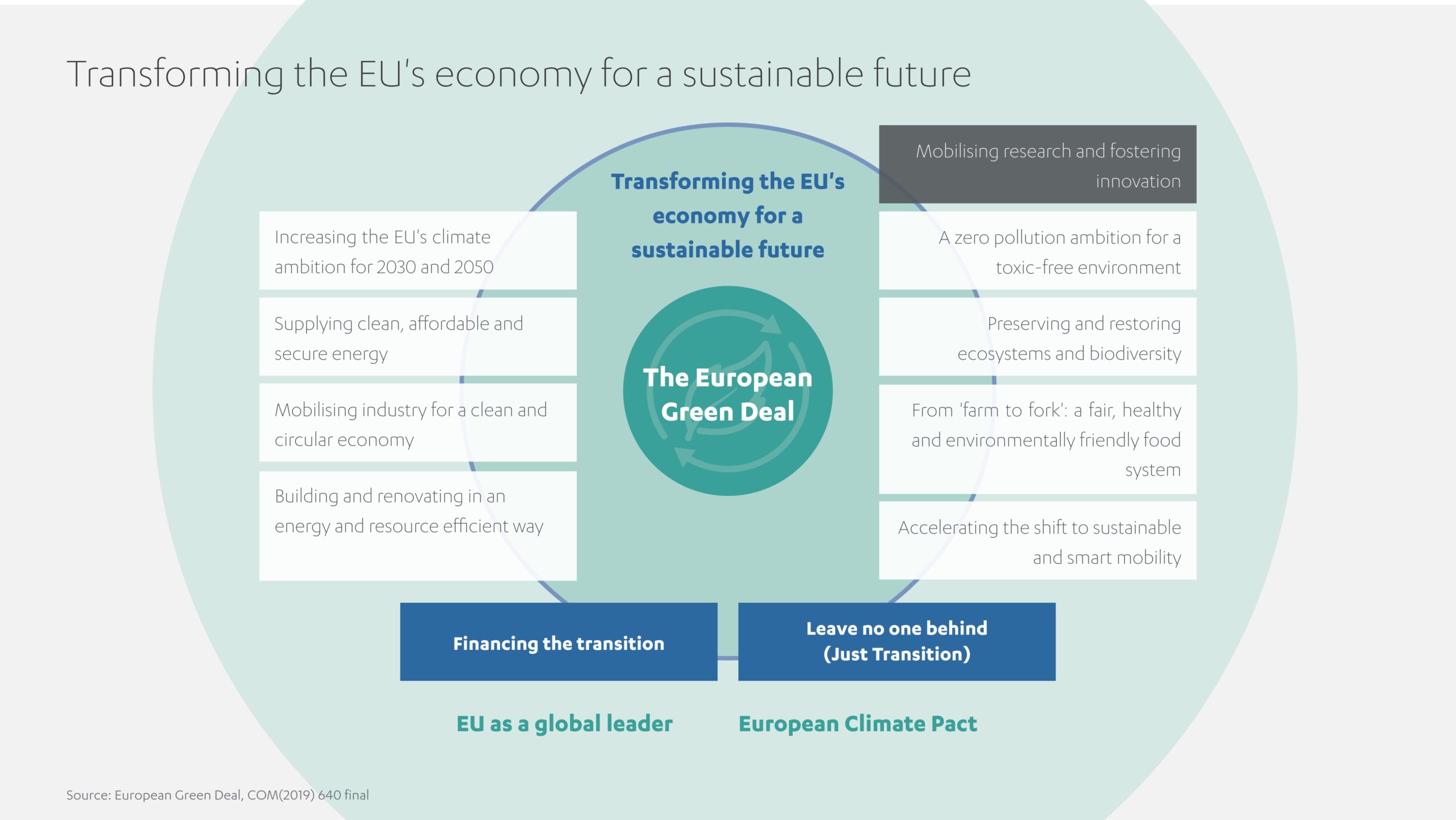
What exactly is wastewater?
Behind the EU’s move to tighten up wastewater management is a growing recognition that the current situation is untenable and risks worsening an already bad situation.
But what exactly is wastewater and why is it so important to sustainability?
The term ‘wastewater’ generally refers to urban wastewater, also known as municipal wastewater or sewage. This is the waste stream generated from residential, commercial, and institutional sources within urban areas. It typically flows through a network of sewer systems, either combined (carrying both stormwater and wastewater) or separate (carrying only wastewater), before reaching a wastewater treatment plant.
There are four main types of urban wastewater:
- Domestic wastewater is generated from households and residential areas, including water from sinks, showers, toilets, washing machines, and other household activities.
- Commercial and institutional wastewater comes from sources such as office buildings, schools, hospitals, restaurants, and other commercial and public facilities.
- Industrial wastewater from light industries may also be discharged into the municipal wastewater system.
- Stormwater and urban runoff from roads, parking lots, and other surfaces can also enter the municipal wastewater system through combined sewer systems or drainage channels.
Risks of mismanaging wastewater
As well as being an inefficient use of resources, mismanaging wastewater creates significant health and environmental risks.
Urban wastewater often contains organic content such as human feces, fat, protein, vegetable and sugar material from food preparation, as well as soaps. Some of it is dissolved into the water and some exist as separate particles suspended in the water, known as suspended solids.
Naturally occurring bacteria consume this organic waste and use it as a fuel for growth. In natural water environments with ample oxygen in the water, aerobic bacteria eat the organic material and form a ‘slime’ of new bacterial cells and dissolved salt-waste products.
If undiluted wastewater is left undisturbed, anaerobic bacteria decompose the organic material and release gases such as hydrogen sulfide, methane and carbon dioxide. Eventually, when all the oxygen in the water is used up, the anaerobic bacteria will take over and the water will go septic. This is harmful to fish and other forms of life that depend on oxygen in the water, sometimes creating ‘dead zones’.
Bacteria, viruses and disease-causing pathogens in wastewater can pollute beaches and contaminate shellfish populations. Fecal coliform bacteria in human waste is typically harmless, but there are pathogens that can negatively impact human health. These can be bacteria such as typhoid or viruses such as hepatitis B, for example. Direct contact with these pathogens or pollution of the water supply can cause infections as a result.
Depending on the source of the wastewater, it will often contain inorganic matter too, including minerals, metals and compounds, such as sodium, copper, lead and zinc, which can’t be broken down easily by organisms in the water.
Some wastewater will also contain nutrients such as phosphorus and nitrogen. In excessive quantities, these can cause eutrophication, which is when the water becomes overly enriched with nutrients. This increases the amount of plant and algae growth and reduces oxygen availability, altering habitats and potentially endangering certain species of marine life.
Ensuring effective wastewater management
Given these risks, it is not hard to see why effectively managing urban wastewater is a critical aspect of sustainable urban water management.
By treating and reusing wastewater, communities can help to enhance water security and alleviate water scarcity, by significantly reducing the overall demand for freshwater, thereby conserving precious water supplies for essential purposes like drinking and domestic use.
This is particularly crucial in water-stressed regions, where treated wastewater can serve as a reliable alternative source for activities such as agricultural irrigation, industrial processes, and even replenishing groundwater aquifers.
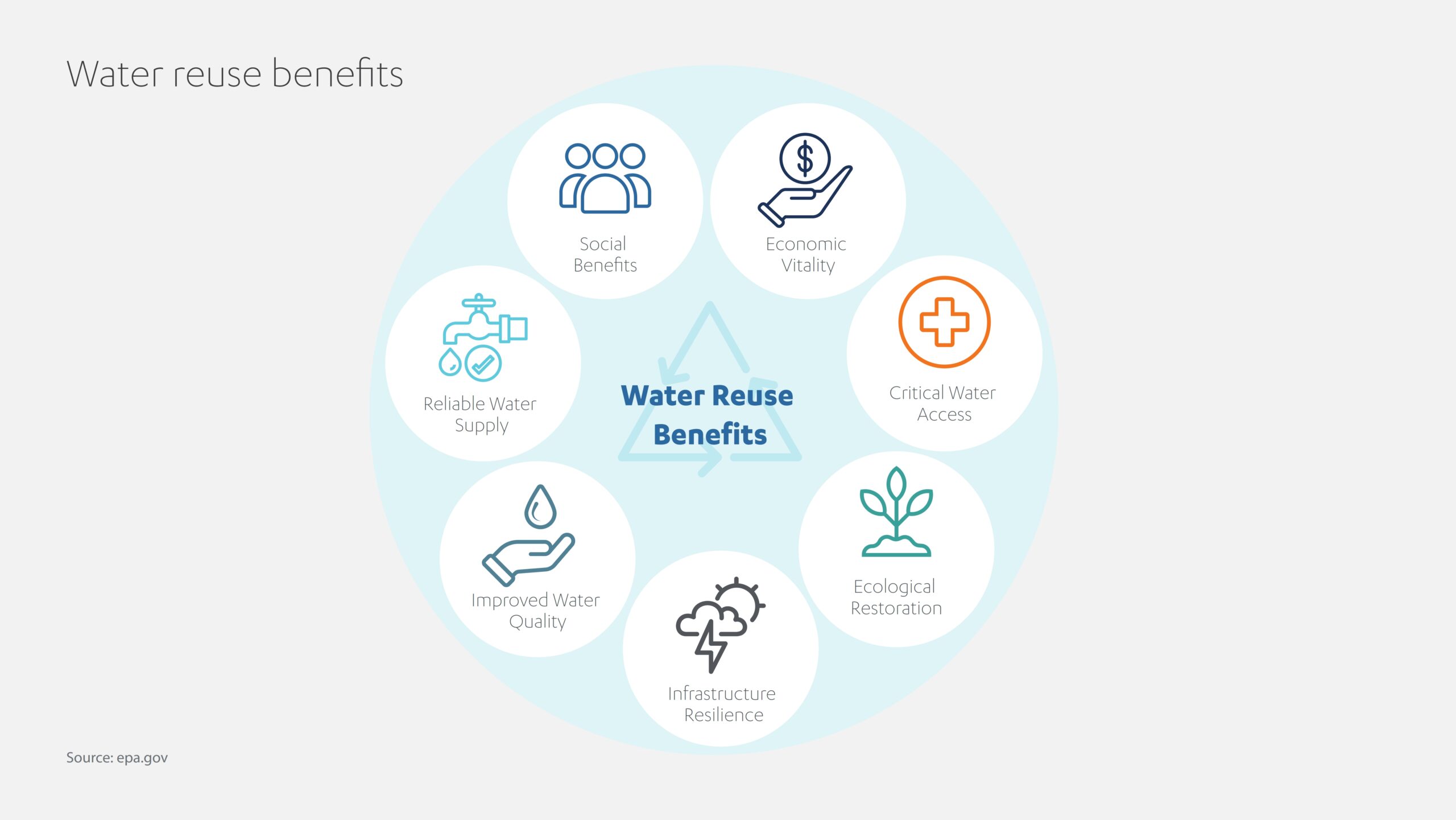
Effective wastewater treatment prevents the discharge of untreated wastewater into water bodies, thereby protecting and conserving freshwater resources from contamination. This safeguards the quality and availability of freshwater sources for human consumption, and agriculture, as well as minimizing any impacts on aquatic ecosystems and public health.
At the same time, advanced wastewater treatment processes can recover valuable resources from wastewater, such as nutrients (phosphorus and nitrogen) for agriculture and biogas for energy production. This resource recovery further contributes to sustainable water management and reduces the demand for freshwater resources.
Such positive and active wastewater management aligns with the principles of sustainable development by promoting responsible water use, reducing the strain on natural water sources, and supporting long-term environmental sustainability. The issue of water scarcity is also inextricably linked to a whole host of other challenges facing our planet. Among the main aims of the 17 United Nations (UN) Sustainable Development Goals (SDGs) are Clean Water and Sanitation (SDG 6), Climate Action (SDG 13), Affordable and Clean Energy (SDG 7), and Zero Hunger (SDG 2).
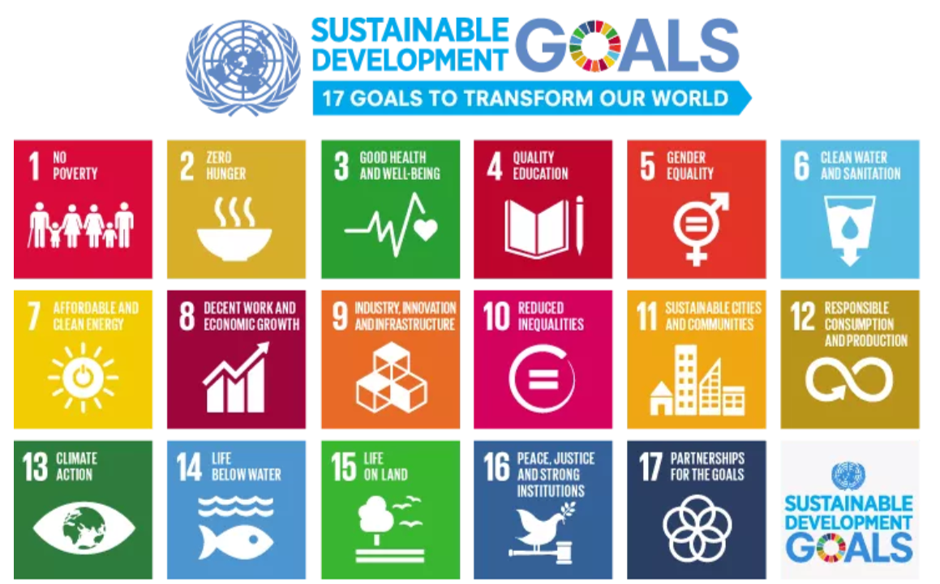
Implications of the new EU directive
The EU’s new directive is widely seen as a positive step in creating a more effective, consistent wastewater treatment framework across all member states.
Strictly speaking, the directive is a revision of the bloc’s existing wastewater treatment directive from 1991. According to the European Commission, the revised directive will “substantially strengthen the protection of human health and the environment from harmful discharges of urban wastewater. It will also lead to cleaner rivers, lakes, groundwater and seas all around Europe.”[4]
Among other measures, it will see more nutrients removed from wastewaters and new standards applied to reduce the levels of micropollutants, particularly from toxic pharmaceuticals and cosmetics. It will introduce systematic monitoring of microplastics and so-called ‘forever chemicals’ – per- and polyfluoroalkyl substances (PFAS) – helping to improve our understanding of how these chemicals are disseminated through wastewaters.
The directive requires all urban ‘agglomerations’ of 1,000 population equivalent (pe) or more to apply secondary treatment (removal of biodegradable organic matter) to wastewater by 2035. In addition, it harmonizes the thresholds and deadlines for tertiary treatment (removal of nitrogen and phosphorus) and quaternary treatment (removal of a broad spectrum of micropollutants), to be implemented by 2039 and 2045, respectively, in large treatment plants, with intermediate targets in 2033 and 2036 for tertiary treatment and in 2033 and 2039 for quaternary treatment.
One of the most eye-catching changes is the implementation of the ‘polluter pays’ principle through Extended Producer Responsibility. This will see the most polluting industries, such as pharmaceuticals and cosmetics, required to pay at least 80% of the costs of quaternary treatment.
In addition, the new directive introduces an energy neutrality target, with wastewater treatment facilities required to draw their power from renewable sources by 2045. EU countries will also be required to extensively promote the reuse of treated wastewater, especially in water-stressed areas, to overcome water scarcity.
Says Virginijus Sinkevičius, European Commissioner for Environment, Oceans and Fisheries, the new directive will “ensure not only cleaner water for all Europeans but so much more – better access to sanitation, implementation of the polluter pays principle and energy autonomy. These changes will completely revolutionize the sector and make it more resilient for decades to come.”
Implementation challenges
The directive is expected to have a significant impact on wastewater management, particularly in small towns and cities across the EU, primarily by extending the scope to cover smaller urban areas.
All urban areas with 1,000 pe or more will be required to implement at least secondary treatment by 2035 – a major change from the previous directive, which only applied to areas with 2,000 pe or more. While tertiary treatment will initially only be mandatory for larger plants, smaller plants between 10,000 and 150,000 pe may also need to implement tertiary treatment by 2045 based on their own risk assessments[5]. This could require significant infrastructure upgrades and investment in advanced treatment technologies for many small towns and cities falling within this population range.
Urban areas between 10,000 and 100,000 pe will also need to develop integrated wastewater management plans if risk assessments indicate their combined sewer overflows or discharges are ‘problematic’[6]. This will mean analyzing the entire sewerage catchment area, setting targets, and implementing measures to reduce pollution from combined sewer overflows, which could be a challenge for smaller municipalities with limited resources.
In addition, the extended monitoring and reporting requirements for microplastics, PFAS, pathogens and antimicrobial resistance, will likely require an upgrade to monitoring, data collecting and report capabilities, which could also be a burden for smaller urban centers with limited budgets and technical expertise.
How are other countries addressing this issue
Although the full impact of the EU directive remains to be seen, several other countries and regions have implemented policies and regulations to address urban wastewater management, albeit on a smaller scale.
Singapore
Singapore is a global leader in urban wastewater reuse through its NEWater initiative[7]. Launched in 2003, NEWater involves treating used water with advanced membrane technologies and ultraviolet disinfection to produce high-grade reclaimed water. This water is primarily used for industrial purposes and to augment reservoirs, contributing to about 40% of Singapore’s total water demand. The initiative has significantly reduced Singapore’s reliance on imported water and enhanced its water security.
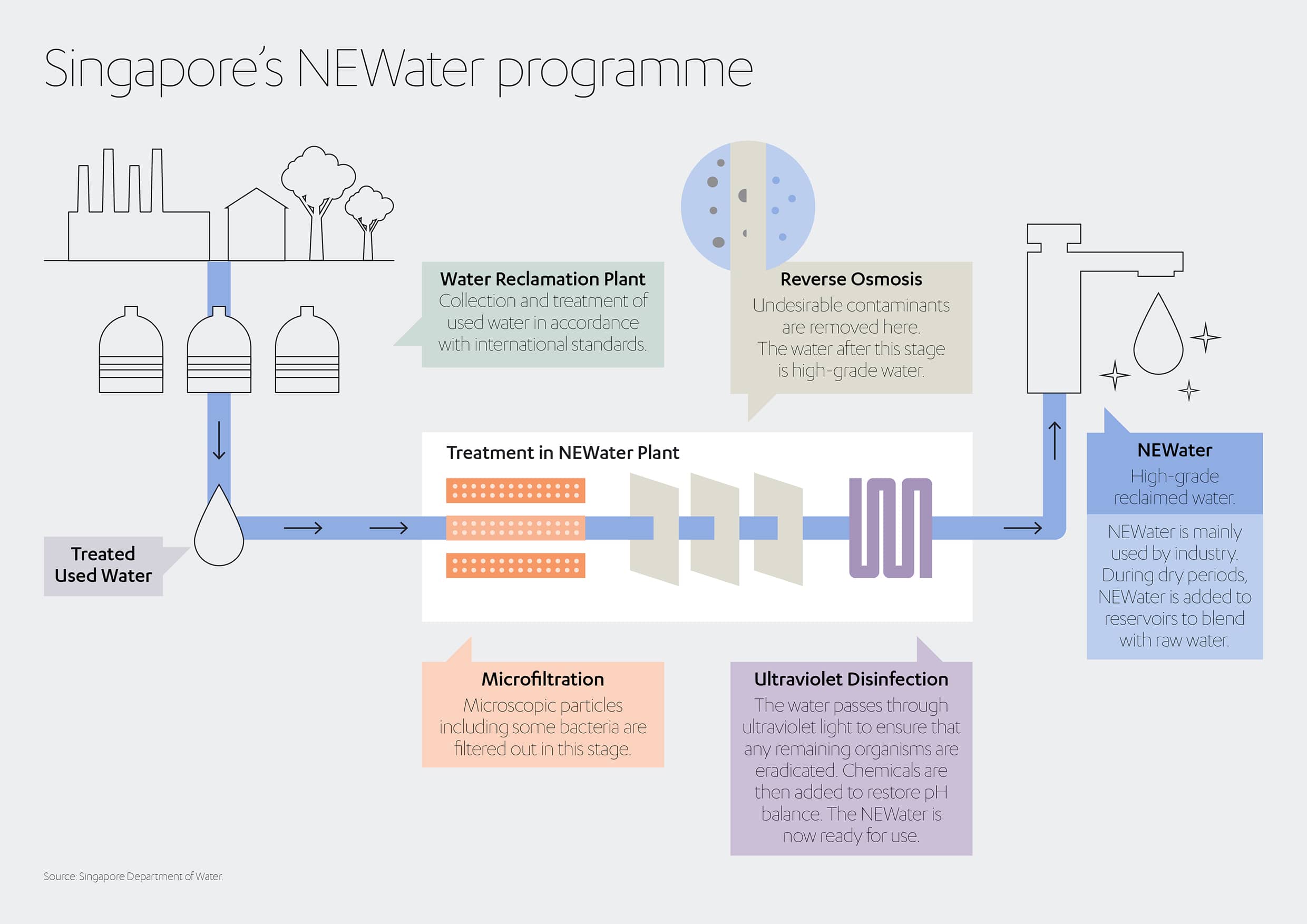
Los Angeles, USA
Los Angeles has made significant strides in wastewater reuse through the Hyperion Water Reclamation Plant[8]. The plant treats wastewater to a high standard, producing recycled water that is used for irrigation, industrial processes, and groundwater recharge. The city aims to recycle 100% of its wastewater by 2035, reducing its dependence on imported water and improving resilience against droughts.
Windhoek, Namibia
Windhoek is a pioneer in direct potable reuse (DPR), where treated wastewater is purified to drinking water standards and directly added to the city’s water supply[9]. This practice has been in place since 1968, making Windhoek one of the first cities in the world to implement DPR. The city’s approach has been crucial in managing water scarcity in an arid region and ensuring a reliable water supply for its residents.
Beijing, China
Beijing has implemented several wastewater reuse projects to address severe water shortages[10]. Treated wastewater is used for various non-potable purposes, including industrial cooling, landscape irrigation, and maintaining water levels in lakes. For example, a wastewater treatment plant in Taiyuan City reclaims 20,000 cubic meters of water per day for industrial and landscaping uses. These initiatives have helped Beijing manage its water resources more sustainably.
River of hope
The new EU Urban Wastewater Treatment Directive not only encourages water conservation but also fosters innovation in wastewater treatment technologies and infrastructure, paving the way for a more sustainable and resilient water management approach.
But while it’s up to governments to define the regulatory and policy frameworks for better use of wastewater resources, it is the private sector that will be at least partially responsible for putting those ambitions into action.
We are proud that Almar Water Solutions, part of Jameel Environmental Services, is helping to transform water availability in key markets across the globe through a portfolio of sustainable water infrastructure projects across Europe, the Middle East, Latin America, Africa, and Asia-Pacific.
One of its flagship projects is the 450,000 m3/day Shuqaiq 3 desalination plant on the Red Sea coast in Saudi Arabia, one of the largest reverse osmosis desalination plants in the world. Covering an area equivalent to 34 soccer fields, the Shuqaiq facility will guarantee reliable drinking water to 1.8 million people over 25 years and created 700 jobs[11],.
Almar Water Solutions began work on a new project in Saudi Arabia, the Zuluf Water Treatment Plant, in April 2024. Zuluf will boast a substantial capacity of 185,000 m3/day, contributing significantly to sustainable water solutions in Saudi Arabia.

Almar also operates the 100,000 m3/d state-of-the-art wastewater treatment plant and sewer conveyance system at Muharraq in Bahrain, which recycles treated used water into high-grade reclaimed water[12].
In Egypt, where 7.3 million people have no access to safe drinking water and 8.4 million are deprived of proper sanitation, it is partnering with HA Utilities to develop wastewater management projects across the country. This led to the acquisition of Ridgewood Group, a major desalination services company. Ridgewood operates 58 desalination plants throughout Egypt, with the capacity to provide 82,440 cubic meters of safe, clean drinking water every day.
Improving urban wastewater reuse is not without its challenges. Concerns over public perception, potential health risks, and the need for robust monitoring and regulatory frameworks must be addressed. Adequate investment in infrastructure, capacity building, and public awareness campaigns are crucial to ensure the safe and effective implementation of wastewater reuse practices. Nevertheless, wastewater management is a critical step towards achieving water security and sustainable water availability.

Abdul Latif Jameel
Says Fady Jameel, Vice Chairman, International, Abdul Latif Jameel: “The EU’s new directive sets a precedent for other regions to follow, recognizing the immense potential of wastewater as a resource rather than a waste product. As the world faces increasing water scarcity challenges, the time to act is now, and urban wastewater reuse must be at the forefront of our efforts towards a water-secure future.”
[1] UNEP 2023, “Wastewater: Turning problem to solution”.
[2] https://environment.ec.europa.eu/topics/water/water-reuse_en
[3] https://www.insideeulifesciences.com/2024/04/10/new-eu-wastewater-treatment-fees-on-producers-of-pharmaceutical-and-cosmetic-products/
[4] https://ec.europa.eu/commission/presscorner/detail/en/ip_24_504
[5] https://environment.ec.europa.eu/topics/water/urban-wastewater_en
[6] https://microtronics.com/en/blog-en/implementation-of-the-eu-urban-waste-water-treatment-directive/
[7] https://www.pub.gov.sg/Public/WaterLoop/OurWaterStory/NEWater
[8] http://publichealth.lacounty.gov/eh/focus/hyperion-water-reclamation-plant.htm
[9] https://www.aquatechtrade.com/news/water-reuse/namibia-second-direct-potable-reuse-project
[10] https://www.iges.or.jp/en/publication_documents/pub/peer/en/1180/IRES_vol.5-2_425.pdf
[11] https://www.almarwater.com/2019/05/09/almar-water-solutions-to-acquire-mubadala-infrastructure-partners-investment-in-muharraq-sewage-treatment-plant-in-bahrain/
[12] https://www.almarwater.com/2019/05/09/almar-water-solutions-to-acquire-mubadala-infrastructure-partners-investment-in-muharraq-sewage-treatment-plant-in-bahrain/
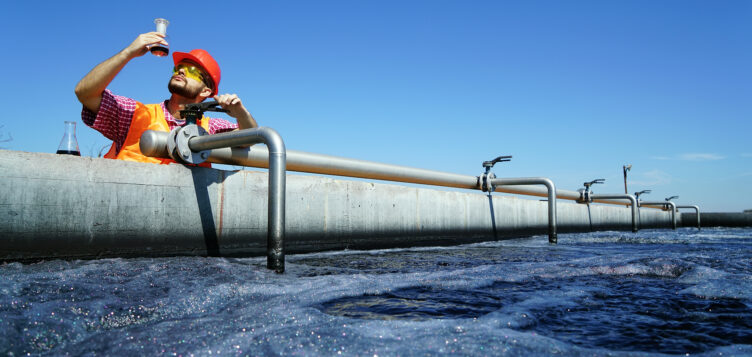




 1x
1x

 Added to press kit
Added to press kit


